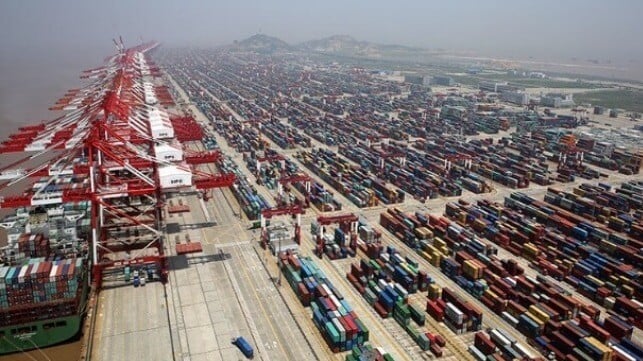Trump Imposes 34% Tariff on Chinese Goods, 10% Global Minimum
Cambodia, Laos, Madagascar hit hardest with 40%-plus tariffs

On Tuesday, President Donald Trump announced sweeping double-digit tariffs on imports from all countries, starting at a minimum threshold of 10 percent.
The administration released a table of rates that it has calculated for 50 different foreign nations' tariffs on American goods, including the equivalent impact of non-tariff trade barriers. In a press conference Wednesday, Trump said that the U.S. would impose a tariff equal to half of each nation's rate on U.S. goods, as a "kind" discounted reciprocal charge.
Most of the nations facing the steepest U.S. tariff hikes are developing countries in the Indo-Pacific, including Cambodia (49 percent), Laos, Madagascar, Vietnam, Myanmar, Sri Lanka and Thailand (36 percent). Vietnam and Thailand have relevance for American industry, as they have become hubs for Chinese manufacturers looking to source inexpensive labor and evade American tariffs.
China is the most important trade partner on the list, and will be subject to a rate of 34 percent, higher than many analysts predicted. The new tariff stacks on top of a previously-declared 20 percent rate on Chinese goods, so it will bump the net rate on China's exports to a total of 54 percent.
Taiwan - which supplies most of the advanced semiconductors used in the U.S. market - will be subject to a rate of 32 percent. European goods will be subject to a flat 20 percent rate for all member states, from Hungary to Germany.
LIBERATION DAY RECIPROCAL TARIFFS ???????? pic.twitter.com/ODckbUWKvO
— The White House (@WhiteHouse) April 2, 2025
Canada and Mexico will be treated separately from the rest of the global list: they are still subject to previously-announced 25 percent tariffs on non-USMCA goods, but all USMCA trade remains duty-free. Russia, Cuba, Belarus and North Korea are not included either; a White House spokesperson told Axios that they were left off because they already face significant sanctions and barriers to U.S. trade.
Some commodities will be treated differently. The new country-by-country tariff schedule does not apply to copper, pharmaceuticals, semiconductors, lumber, bullion, and "energy and other certain minerals." The semiconductor exclusion will be of particular relief for Taiwan and for U.S. tech companies.
A separate new tariff of 25 percent on all foreign-built autos takes effect immediately, with repercussions for ro/ro carriers. The administration's 25 percent tariff on foreign steel and aluminum also remains in effect.
The new tariffs take full effect on April 9, giving time for bilateral talks with affected nations. "The silver lining for investors could be that this is only a starting point for negotiations with other countries and ultimately tariff rates will come down across the board," Northlight Asset Management chief investment officer Chris Zaccarelli told the Wall Street Journal.
Some anomalies on the initial public list have attracted attention. Lesotho, a small landlocked nation surrounded by South Africa, was hit with the highest U.S. tariff rate on the schedule, 50 percent. France's island territories of Reunion, Saint Pierre and Miquelon received elevated tariffs of 37 percent and 50 percent, respectively. The list released by the White House also imposed a 10 percent tariff on the Heard and McDonald Islands, an uninhabited Australian territory in Antarctic waters. The formal list attached to the executive order is shorter, and it omits these entries.
